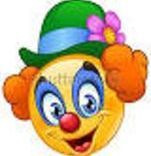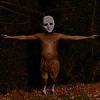With 1963 primitive graphics technology, How was this skeleton animations fights achieved?
can't help being grumpy...
Just need to let some steam out, so my head doesn't explode...
Looks like https://en.wikipedia.org/wiki/Stop_motion
“If I understand the standard right it is legal and safe to do this but the resulting value could be anything.”
Doesn't the picture in your link explain it?

Also :lol: @ the wilhelm scream at 2:12
Check this out from the 1940's:
Also stop motion, double exposures and matte painting.
. 22 Racing Series .
Same way films like Nightmare before Christmas, and Wallace and Gromit is made...
(which IMO is even more impressive end result then Harryhousen, though his work is very impressive for being pioneering (and you'd expect the art to evolve over the decades))
Well, minus the backprojections and matte paintings.
Also :lol: @ the wilhelm scream at 2:12
Check this out from the 1940's:
Also stop motion, double exposures and matte painting.
Wow, I'm lost for words, that must have taken ages to make. Lots stop motions and synchronizing
I thought the image in the link I posted demonstrated how physical avatars (or puppets) are magnified to life size or giant size. But doesn't explain the unaided synchronized animated movements, overlayed into the real world
Same way films like Nightmare before Christmas, and Wallace and Gromit is made...
(which IMO is even more impressive end result then Harryhousen, though his work is very impressive for being pioneering (and you'd expect the art to evolve over the decades))
Well, minus the backprojections and matte paintings.
could post a vid link of this- if its available.
can't help being grumpy...
Just need to let some steam out, so my head doesn't explode...
I thought the image in the link I posted demonstrated how physical avatars (or puppets) are magnified to life size or giant size. But doesn't explain the unaided synchronized animated movements, overlayed into the real world
They could advance the background projector to by one frame (if a background is required), animate all the figurines by one frame, update/move the matte painting, advance the filming camera by one frame, and then operate the shutter like a regular camera to expose a single frame. That would capture the figurines, masked behind the matte painting, and the background projection behind them.
You could project the already-filmed real-life footage onto the background, which would be equivalent to compositing the matte painting and the stop-motion figurines on top of it.
If you use a black background (and possibly a black matte painting as a mask), and put the already-filmed real-life footage into the camera instead of the projector, then you can also superimpose the stop-motion figurines onto the existing footage via a second exposure over the original frames. This is an additive effect though - and you can see it in that russian video I linked, where the tiny dancing man sometimes appears translucent.
. 22 Racing Series .
Same way films like Nightmare before Christmas, and Wallace and Gromit is made...
(which IMO is even more impressive end result then Harryhousen, though his work is very impressive for being pioneering (and you'd expect the art to evolve over the decades))
Well, minus the backprojections and matte paintings.
could post a vid link of this- if its available.
Lots and lots of work, and very talented animators.
They could advance the background projector to by one frame (if a background is required), animate all the figurines by one frame, update/move the matte painting, advance the filming camera by one frame, and then operate the shutter like a regular camera to expose a single frame. That would capture the figurines, masked behind the matte painting, and the background projection behind them.
You could project the already-filmed real-life footage onto the background, which would be equivalent to compositing the matte painting and the stop-motion figurines on top of it.
If you use a black background (and possibly a black matte painting as a mask), and put the already-filmed real-life footage into the camera instead of the projector, then you can also superimpose the stop-motion figurines onto the existing footage via a second exposure over the original frames. This is an additive effect though - and you can see it in that russian video I linked, where the tiny dancing man sometimes appears translucent.
Very smart people,
Lots and lots of work, and very talented animators.
Every single detail worked out, Wish I can be as meticulous
I hope they are able to reuse the set for many sequels though. It would be a waste if all that efforts is just for one or two films
can't help being grumpy...
Just need to let some steam out, so my head doesn't explode...
I thought the image in the link I posted demonstrated how physical avatars (or puppets) are magnified to life size or giant size. But doesn't explain the unaided synchronized animated movements, overlayed into the real world
They could advance the background projector to by one frame (if a background is required), animate all the figurines by one frame, update/move the matte painting, advance the filming camera by one frame, and then operate the shutter like a regular camera to expose a single frame. That would capture the figurines, masked behind the matte painting, and the background projection behind them.
You could project the already-filmed real-life footage onto the background, which would be equivalent to compositing the matte painting and the stop-motion figurines on top of it.
If you use a black background (and possibly a black matte painting as a mask), and put the already-filmed real-life footage into the camera instead of the projector, then you can also superimpose the stop-motion figurines onto the existing footage via a second exposure over the original frames. This is an additive effect though - and you can see it in that russian video I linked, where the tiny dancing man sometimes appears translucent.
It's worth noting that even though that particular video uses double exposure in the simplest way possible, it was also entirely possible to do proper chroma keying in 1940 as well.








